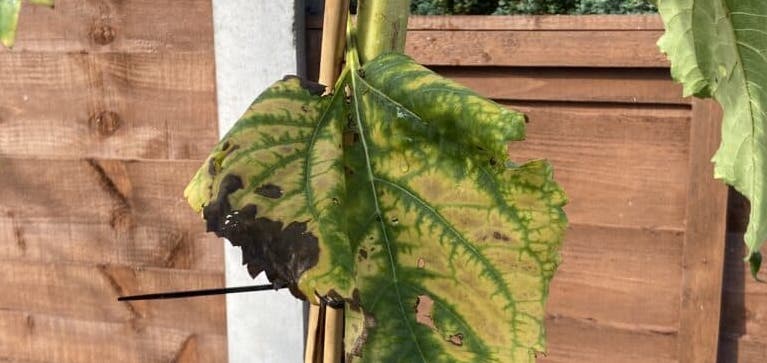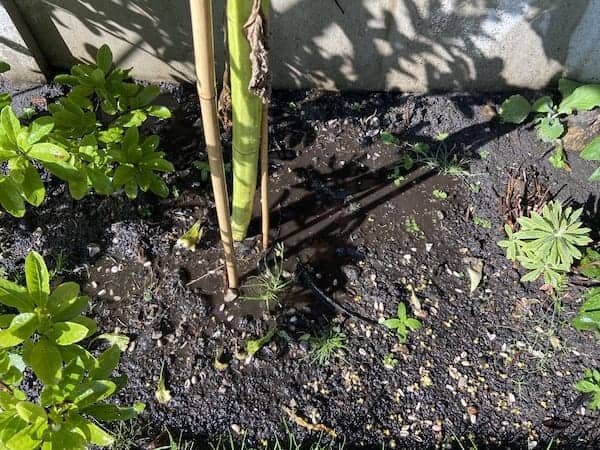
Why Are My Sunflowers Leaves Turning Yellow? – 4 Reasons
Our site is reader supported, this means we may earn a small commission from Amazon and other affiliates when you buy through links on our site.
Sunflowers are one of the most breath-taking plants that are easy to grow. They are generally very easy to grow with very few issues to worry about. However, while these plants are typically low maintenance, they can get their fair share of issues, usually to do with the environment.
It is easy to tell if your sunflowers are healthy just by looking at the leaves. Yellowing leaves at the wrong time indicates the plant may have some underlying issues that I will cover below to help you find out how to overcome the issues your sunflowers may have and more importantly how to prevent them in the first place:
The reasons your sunflower leaves could be turning yellow
1. Nutritional deficiencies in the soil can cause yellowing leaves
Before planting your sunflowers, did you check the soil condition? If the soil is deficient in important minerals like potassium, phosphorus and nitrogen, it will affect the growth of the plant as it matures. Nitrogen deficiency is a common issue facing plants, especially around spring. To solve the deficiency, use high-nitrogen fertilisers or mulch using well-rotted organic compost.
Within some time, the slow trickle of nitrogen into the plant system will help alleviate the yellow leaves. Like everything in life, moderation is key. Oversaturating the plant with minerals will cause stunted growth, so follow recommended procedures.
2. Over watering is another common cause of yellowing leaves on sunflowers
Plants need water to survive but if you supply them with too much water, fungal infections can arise. Fungi love moist environments and if conditions are right, they get hold of the plant fast. Avoid overwatering your plants, especially for potted plants with poor drainage, because it is hard to disseminate all the excess water.
Let the soil dry a little in between watering to dissuade issues like root rot that causes the entire plant to rot. Sunflowers growing in clay soil do not need large amounts of water daily, little amounts of water will do at a time.
3. Very warm prolonged weather can also cause yellowing of the leaves
Sunflowers enjoy basking in warm temperatures, but when the sun is too hot, the plant suffers. Staying under the hot sun for days without adequate water will result in wilting and sunburnt leaves. Plants grown indoors can also suffer scorched leaves if exposed to too much light. It is better to acclimate indoor plants first before introducing them to outdoor conditions.
During periods of drought just remember to water often and ensure the soil drains well to avoid root rot, another cause of yellowing leaves.
4. Pest and diseases
Apart from suffering fungal infections, sunflowers also attract pests such as aphids and spider mites. In most cases, pests such as aphids, mites and thrips feed on the plant’s sap depriving leaves of nutrition. The damage is usually minimal unless the infestation is on a large scale, which will require chemical control by spraying with pesticides.
Inspect the yellowing leaves for more clues on what is causing the problem. If it is spider mites, you will find tiny webs on the plant and stem lacerations. There are always accompanying symptoms to any problem, once you are sure of the culprit, take measures fast to prevent the problem from spreading to other plants.
Also read: 8 organic ways to stop caterpillars eating your plants
FAQs
How can I revive the sunflower’s foliage?
First things first, identify the source of the issue. You need to figure out if it is a lack of water or pests causing the yellowing leaves. Once you identify the source of the problem, identify a viable treatment plan. As you apply solutions to the problem, keep monitoring the plant to see signs of improvement.
If the plant’s situation is not improving, then the diagnosis might be wrong or the plant has incurred irreparable damage.
Prevention is better than trying to treat the problem, this means planting in a sunny position in fertile well-drained soil and treating with pesticides at the first sign that something is happening.
Read next: Why are my sunflowers drooping?
Read next: Why are My Sunflowers Leaves Curling?
What is the ideal time to feed sunflowers?
Sunflowers are voracious eaters but too much feed will cause more foliage and fewer blooms, this is a common mistake. You can feed your plants during the growing season to facilitate quality blooms. If you choose chemical fertilisers, please read the instructions and apply as stated on the box. Otherwise, well-rotted manure is a safe option for long-term feeding systems or feeding with tomato feed once they start to produce buds.
How do I prevent root rot in sunflowers?
Root rot is a devastating disease that is hard to manage so it is better to undertake preventative measures. Start by working with sunflower varieties that are resistant to diseases and plant them in well-drained soils. This may mean adding plenty of organic compost and grit into the soil to improve soil structure so it doesn’t become waterlogged.
Avoid overwatering the plants because it encourages the fungi to reproduce and infect the plant.
Final Conclusion
Cultivating sunflowers from seeds takes time and nobody wants to see their efforts go to waste. Keep an eye on your plants to catch the yellowing leaves in the beginning stages before the problem exacerbates.
Once the issue is resolved, you will be less stressed and the plants will continue thriving without problems. I hope you found this guide helpful.
Read next: How to collect sunflower seeds

